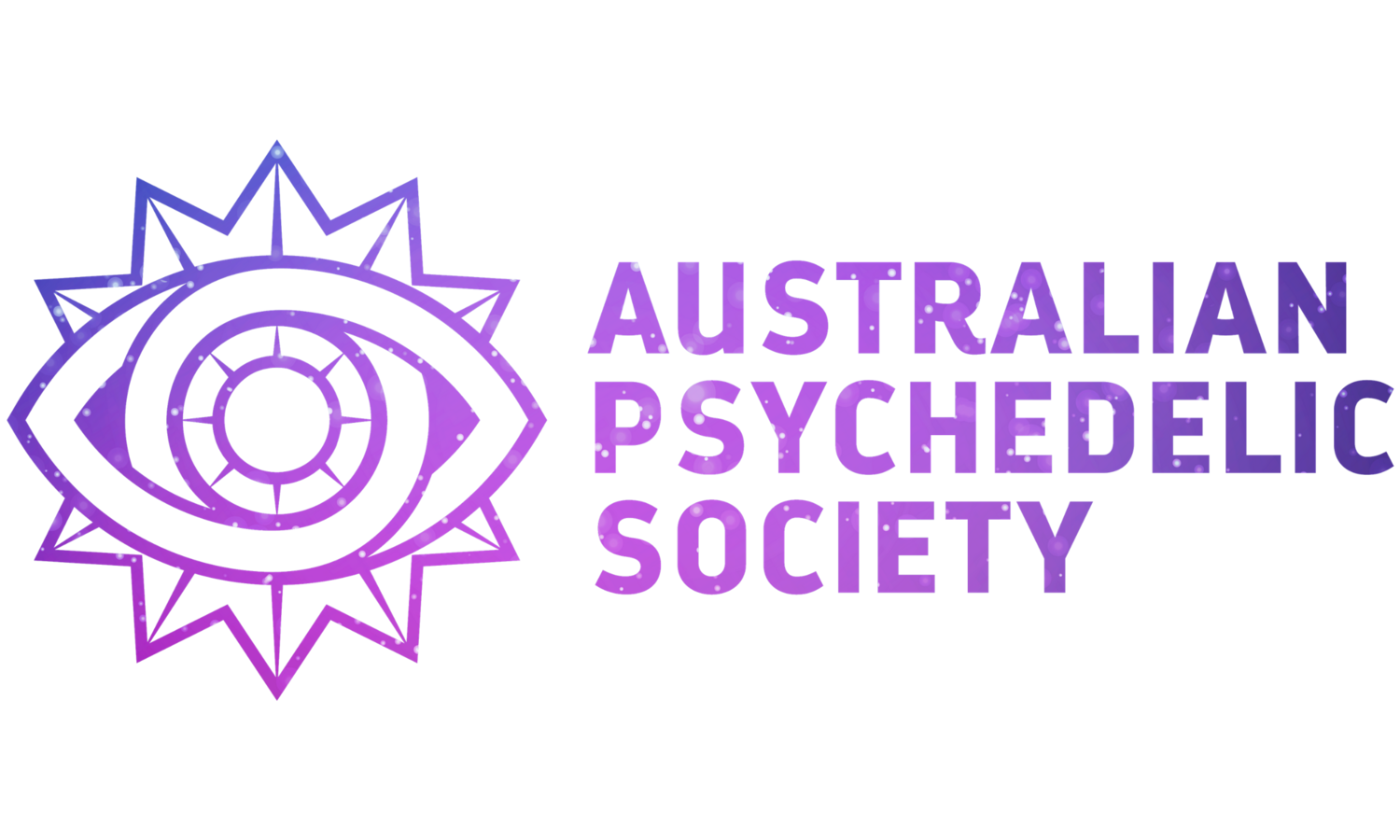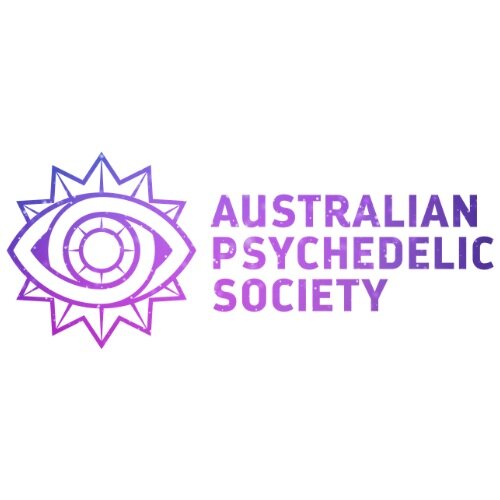Visions from the Deathless Realm
Welcome to the first instalment of Psychedelic Creatives, featuring Visha Jayasena interviewed by the APS’s Jef Baker about her art project Amaraloka.
Visha Jayasena with ‘Tantra of The Dead’. Digital Illustration ©2020 amaraloka.com.au
Many of your pieces are clearly psychedelically inspired and themed. Could you share how these experiences or ‘altered states’ inform your work?
The main way altered states inform my work is that my art creation is a direct attempt to 'bring down' or integrate the visceral nature and non-dual perspective of psychedelic experiences into the everyday, more logic-orientated reality. So I guess in a way you could say I am attempting to channel and visually communicate that expanded point of view that psychedelics naturally elicit. Another unique aspect of visionary art is that it allows for direct play and interaction with the plant realm, with the plants themselves as the artists; for example the plant artist can animate and add movement to the piece, dial up the colours, create infinite depth, evoke emotions and healing and at times even directly speak or 'materialise' through the art pieces, which were created under their direction anyway. I use the term ‘art-craft' to best describe this, but all cultures having been working with plants as master healers, teachers and allies since ancient times, and modern visionary art is just an extension of its ancestral use in medicine, ritual and magic. I'm also interested in other forms of cultural practices involving altered states like Dream Yoga and meditation, so you'll see those influences in my work as well.
'Cactus Skull’. Digital Illustration by Visha Jayasena ©2020 amaraloka.com.au
As a digital artist, how do you translate or transfer a particular vision to this medium? For example, do you attempt preliminary sketches while in an altered state, or is it entirely rendered later?
I find translating visions and messages into the digital space very natural, as the software allows for a high level of precision and quality. For example I can draw a perfect line that’s .01 of a mm or scale something up to infinity, I have access to every colour at my fingertips, and every shape, pattern or grid I draw is super accurate, etc. In terms of creative process, I usually would get a vision or ideas a few days after a ceremony or journey, and then I would spend months slowly refining the composition and rough content mentally until I feel the overall vibe of the piece, and then I would do a initial sketch and then start developing on the computer, and the software I use to create is Adobe Illustrator. Once the basic elements are created, I would then start adding embellishments and details such as symbols, mantras, yantras, etc. My favourite part of working in a digital medium is that it allows for such a greater level of refinement as it's super easy to rework errors and experiment with whole palettes of colours, etc.
‘Shrooms & UFOs’. Digital Illustration by Visha Jayasena ©2020 amaraloka.com.au
How long have you been working as a digital artist and what drew you to this medium? Are there other mediums you work in? What do you feel are the advantages of digital art in representing psychedelic themes or content?
I had my first psychedelic experience at a plant medicine ceremony in 2010; day 1 was San Pedro and day 2 was Aya. And at that ceremony I met a local elder who the year after, assisted me with a 4.5g mushroom journey, and he later told me he had seen that experience initiating me as an artist. I created my first piece of art shortly after, which was titled 'Medicine Skull' in dedication to him and his Tibetan kapalas. I studied visual art in high school and have over 10 years industry experience as a graphic designer specialising in print, but I only started making art after meeting the plants. Since my background and training is in graphic arts, I feel my work is a unique mix of art, design and visual communication.
'Medicine Skull'. Digital Illustration by Visha Jayasena ©2020 amaraloka.com
As we can see various entheogens represented in your work, is there one that you find particularly lends itself to the creative process ? Do you find that different plants carry a different visionary theme or flavour ? If so, do you approach when getting inspiration?
Through the years I've been drawn to and inspired by particular plants at different periods; for example at the beginning of my journey I was extremely dedicated to San Pedro as my main plant teacher but during the last 2 years my calling has been to work with cannabis. I do definitely feel each plant has its own theme and way of communication; for example San Pedro is a bliss master and heart opener while cannabis has helped me develop my ability to channel the visions into artwork.
Visha Jayasena with ‘The Most High (Green Tara)’. Digital Illustration ©2020 amaraloka.com.au
Your work extends beyond the merely psychedelic and has some explicit spiritual themes. What role do the Eastern spiritual/philosophical/religious traditions or culture play in your life and art?
My family moved from Sri Lanka to Australia in the late 80s, and shortly after my dad joined the Dzogchen (‘Great Perfection’) community in the Blue Mountains, which is a school of Tantric Buddhism originating from Tibet also known as atiyoga (utmost yoga). So my dad was initiated there and I grew up under those spiritual teachings, which had a high focus on non-duality and altered states. In Tibetan culture, there's a focus on what is called 'direct transmission' - it's a little esoteric, but basically the Buddhist master is able to guide you into the 'perfected realm' or state of enlightenment. I feel this is exactly what the plants do too - they are natural masters of the perfected non-dual state and are able to directly transmit that state to us like a plant Buddha. Many people and other visionary artists have spoken about discovering Eastern wisdom and thought after their experiences with psychedelics, but for me it was actually the opposite - I had a deep intellectual understanding of Buddhism since I was young, but the plants gave me my first initiation and direct experience of Buddhahood. And now through art, it's an offering back to the world to inspire the continued evolution of consciousness. I believe Buddhism and psychedelics have a natural correlation, and that's to unify the Self or what is commonly referred to as ‘ego death’. This has also led me to explore the interplay between cultures, particularly between India and Egypt and their symbolic connections such as the ubiquitous representation of the lotus through to the Egyptians & Tibetans both having a ‘Book of the Dead’.
‘Devoted to The Moment’. Digital Illustration by Visha Jayasena ©2020 amaraloka.com.au
Is there anything else you’d like the audience to know about your artwork?
In Tibetan Buddhism the traditional art is call Thangka (‘recorded message’) which is an ancient art form that combines deities, symbolism and sacred geometry. I am greatly inspired by the graphic style of Thangka paintings and aim to emulate that ancient vision but through a modern medium. I am also highly influenced by the practice of Yidam (‘mind commitment’) which is difficult to translate in English, but can be described as a 'meditational deity’ that combines forms, mudras and symbols which one can work with to embody certain states through visualisation techniques. For example if you want to cultivate compassion you can use Green Tara as your Yidam or if you are seeking healing you can work with Medicine Buddha, etc. Basically they are forms of enlightened beings or entities that you can use as allies for spiritual growth. I have crafted my artwork to present them as modern Yidams, each designed for particular outcomes like polarity balancing, healing, protection, etc. And with the intention that these Yidams are to be used alongside the aid of the plants and psychedelics. There's further information about Yidams on my website. So that's probably the deepest level you can work with the art, but I would say my greatest intention in sharing my work is to invite people into higher states of mindfulness and to bring magic into the everyday. I want people to be reminded of their true nature which is the perfected state, when they see my work. Also obviously, the artworks can be used as visual tools to enhance enjoyment and deepen exploration during psychedelic trips.
‘Buddha Burn’. Digital Illustration ©2020 by Visha Jayasena amaraloka.com.au
Where does your artist name Amaraloka come from and how does your use of the Norse Valknut symbol as your logo represent your body of work?
Firstly Amaraloka is a portmanteau of the Sanskrit words Amara meaning ‘deathless’ and Loka meaning ‘realm’, so a realm of eternal being. In Norse mythology there was an extended universe that consisted of 9 worlds or 'realms' and the Valknut symbol is speculated to have been used by Odin to travel between these realms (3 triangles/9 points). I believe these worlds were symbolic for realms of consciousness; an idea which is also mirrored in the 9 realms of Buddhist cosmology and the 9 Neteru (gods/goddesses) in ancient Egypt. Through psychedelics we can also explore these archetypal realms of consciousness within our own minds, and the psychedelics are also showing us that we may be worthy of these direct transmissions again through the current resurgence of interest happening at the moment.










